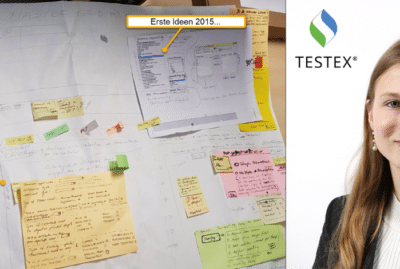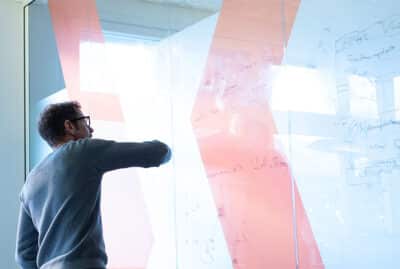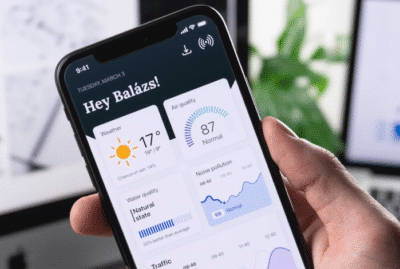In prototyping, applications are implemented in a simplified form. Details or entire functions are left out for an initial evaluation of the idea. This can save costs and time during development. Prototyping is used, for example, in the process of usability engineering or to concretise and test project ideas. Prototypes can often also visualise important specifications that cannot be easily put into words.
Prototyping: Identify potential challenges in time.

Why does prototyping make sense?
Prototyping is used to visualise ideas and make them tangible for the customer. This allows specifications to be confirmed and revised. However, prototyping can also be used to concretise and evaluate approaches or concepts. This is because it is often necessary to assess in advance how sustainable and marketable concepts are.
The objectives of prototyping include the validation of requirements by ensuring that they meet the needs of our customers. By creating prototypes, decision-makers are given the opportunity to see the system early on in the development process and provide valuable feedback. Prototypes are also used to test design aspects such as user interface and interaction patterns.
There are different types of prototypes, including low-fidelity prototypes, which are quick and easy to create and can include sketches, wireframes or paper models. On the other hand, there are high-fidelity prototypes, which are more detailed and closer to the final product in terms of features and user interface.
The benefits of prototyping include improved communication between developers, designers and customers, early detection of errors and design problems, and a reduction in misunderstandings as prototypes provide a physical representation of the system.
However, there are also challenges with prototyping, including the time and resources required, especially when creating highly detailed models. In addition, in some cases prototypes cannot represent all the functions of the final product. Overall, prototyping is an iterative process that helps to develop better software products by gathering feedback early and validating design decisions.
Why soxes?
At soxes, the customer is actively involved in the development throughout the entire process. They are given continuous access to documentation, detailed wireframes and pixel-perfect designs for key pages to ensure a clear understanding of the business logic and design of the application and to avoid potential surprises. This transparent and collaborative approach is our guide to successful implementation and a customised software solution that meets the highest standards.
Find out more about our agile approach to software development in this article!
With soxes, you gain a partner with competence and reliability. For 20 years, our company has stood for the best quality in the development, programming and outsourcing of software. With its services, soxes covers the entire life cycle of an IT development (conception, consulting, development and support). Take the first step towards the successful implementation of your project and contact us for more information.
Contact
Do you have any questions? Would you like to find out more about our services?
We look forward to your enquiry.
Contact us




































































